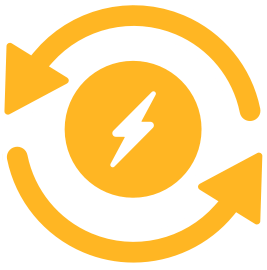| Topic: Comet Icon- 2013 15 times brighter than the moon coming | |
|---|---|
|
2012S1 --Comet Icon- 2013 is coming in November 2013.
On the 28th it will be closest to the sun and is said that it may be 15 times brighter than the moon and visible even in day light. WOW. It will be the brightest comet in the history of the world. http://www.youtube.com/watch?v=gz3l6cU0xCA&feature=endscreen&NR=1 |
|
|
|
|
|
i've been reading about this, sounds pretty cool!
|
|
|
|
|
|
I made an error in the name of the comet. It is not "Icon"
C/2012 S1 is the name of the comet coming in this year. It will not hit us but it should be a good show in the sky. This is what the name means: C means it’s a non-periodic comet, which is a comet that does not return to the Solar System on a regular basis, if at all. Halley’s Comet is a periodic comet because it comes around every 76 years, which means it’d be designated by the letter P. 2012 is the year it was discovered. Duh. S is the half-month in which it was discovered. A comet discovered in the first half of January would be labeled A. The second half would be B. The first half of February would be C, and so on. This one was discovered on September 21, and since they don’t use the letter I ‘cause it’s confusing, it’s labeled S. 1 means it’s the first comet discovered in the second half of September. |
|
|
|
|
|
Edited by
Jeanniebean
on
Tue 02/19/13 09:14 PM
|
|
|
Lets talk about Comets. Particularly C/2012S1
C/2012 S1 (ISON) is a sungrazing comet discovered on 21 September 2012 by Vitali Nevski (Виталий Невский, Vitebsk, Belarus) and Artyom Novichonok (Артём Новичонок, Kondopoga, Russia). First: Wow hats off to Russia for finding it!! What the hell is America doing besides trying to control the world? Too busy to look for comets? From Wiki: Comet C/2012 S1 will come to perihelion (closest approach to the Sun) on 28 November 2013 at a distance of 0.012 AU (1,800,000 km; 1,100,000 mi) from the center point of the Sun.[2][6] Accounting for the solar radius of 695,500 km, the comet will pass approximately 1,100,000 kilometres (680,000 mi) above the Sun's surface. Its orbit is nearly parabolic, which suggests that it may be a dynamically new comet coming freshly from the Oort cloud. Comment: Okay the just recently discovered this comet and already they are claiming to know everything about it, when it will arrive etc. Pardon me if I am skeptical. Interesting: Some astronomers say that given the close orbital relationship between C/2012 S1 and the Great Comet of 1680, the objects may be the same. Another source: Some of the orbital elements of comet C/2012 S1 are similar to that of the Great Comet of 1680, which suggests the two comets may have fragmented from the same parent body. Read more: http://digitaljournal.com/article/333993#ixzz2LPg780CE Also from Wiki: Some of the orbital elements of comet C/2012 S1 are similar to that of the Great Comet of 1680 which suggests the two comets may have fragmented from the same parent body.[9] Earth is expected to pass through the orbit of the comet on 14–15 January 2014, which may result in the creation of a meteor shower.[10] Question: A meteor shower? Really? How big are these meteors? Will they be anything like the one that hit Russia? It seems that earth has passed through the tail of a comet before, and nothing much happened, it was just dust. There is another comet due in March: C/2011 L4 also coming from the Ort cloud. Comet C/2011 L4 (PANSTARRS), is a non-periodic comet discovered in June 2011, that is expected to be visible to the naked eye when it is near perihelion in March 2013.[3][4] The comet was discovered using the Pan-STARRS telescope located near the summit of Haleakala, on the island of Maui in Hawaii. Some people insist that comets are electrical and not just merely balls of ice and dirt. I have seen video of the sun and a comet reaching out and making a connection with each other with gigantic flares. http://www.bibliotecapleyades.net/electric_universe/esp_electricuniverse17.htm |
|
|
|
|







